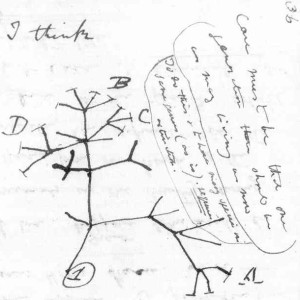In a goody bag I picked up at one of the excellent Like Minds breakfast events, there was a Harvard Business Review booklet called Life’s Work. It’s a collection of short interviews with ‘wildly successful people’. I’m not sure what the Harvard Business Review definition of a wildly successful person is. It must be the opposite of the domesticated version, I guess.
The first interview in the book is with Ai Weiwei, the wildly successful Chinese multimedia artist. And person, of course. Here is the exchange that stuck me.
You often work collaboratively. Why?
I think I can be creative only in a group. It’s all about the communication. It can help you build something that would not exist if you were working separately. It’s not just one plus one but something more.
When I work with clients who are writing books, they often tell me that not only does the writing become easier when they know I will be editing and cutting and making suggestions but that it also becomes more fun.
Not ‘more fun’ because I wear silly hats for Skype calls or hand out sweets at meetings but more enjoyable because working with someone else is generally more stimulating and feels less pressured. In the days when I thought I might be a TV scriptwriter, I discovered that working with a writing partner made the blank page far less terrifying. It’s like creeping downstairs to the basement in the dark knowing your best friend is beside you. (It also means that, according to the old chestnut, if something nasty lurches out of the darkness towards you, you only need to be able to run faster than your friend.)
In short – bringing us back up from the basement and into the light – it can free your creativity to be working with someone else.
This is not the creativity of the brainstorming session, which, in my experience of corporate life, is often a case of one manager looking desperately to subordinates for help. No, this is the creativity of partners invested equally in an outcome working together to play at getting the best possible result.
I’ve written before about how ideas take new forms and develop when written down. This is magnified when those ideas are shared and discussed. I love the process of receiving some text from a client, trying to improve the flow or the structure or even the words themselves, and then sending it back with questions. Then the next version comes across and what I had thought were improvements have then been improved upon further. And so the process continues.
Ai Weiwei probably doesn’t mean collaborative writing in his answer, although there is no reason to assume he dismisses such a thing in his work. But working in an organisation often gives you the chance of collaboration by another name. Think of the memos and manuals and emails and specifications that cross your desk. Instead of taking these as the final word on something, what would happen if you plucked out an idea or two from each document and found new – and better – ways to express them? (Please note that I’m not suggesting you tweak the CEO’s latest announcement and return it, unless there has been an explicit request for ideas for improvement.)
But one thing collaborative writing does do well is help you get away from worrying too much about how something is written. It’s a quick way to get the internal editor off your back and lets you focus instead on the ideas behind your writing. Knowing that someone else is going to play about with the ideas and that you will then have a chance to refine the writing further means that you concentrate on the simple message and the thing you want to say without getting hung up on trying to make it sound clever.
Try it.

